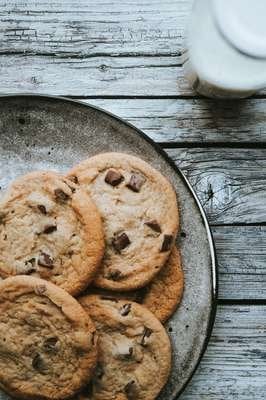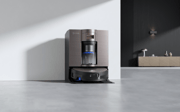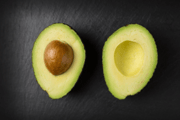One pastry's hefty price tag leaves bitter taste in one mum's mouth
By
Danielle F.
- Replies 17
In an era where the cost of living is a hot topic, every dollar counts.
It's no wonder that the price of everyday items is under the microscope.
For many Australians, finding ways to stretch the budget is more critical than ever.
So, when a simple pleasure comes with a hefty price tag, it's bound to raise eyebrows and spark a conversation about the value of these treats.
Deborah Knight's experience, which she shared with a mix of disbelief and resignation, was a telling sign of the times.
While out with her daughter in Sydney's Inner West, Deb stumbled upon a local coffee shop selling biscuits at a price that seemed to defy logic.
The biscuits were admittedly larger than an average homemade treat and came in tempting flavours like chocolate chip, salted caramel, and Nutella.
However, each biscuit came with a $8.50 price tag, which took Deborah aback.
'To be honest, I didn't take much notice of how much it cost while my daughter made her choice and the biscuit was handed to her,' she wrote.
'I'd assumed it would be a few dollars. But just as she was about to take a bite, and as I was paying, I was stunned at the price. Who pays $8.50 for a biscuit?'
This isn't just about a biscuit; it's about the broader implications of the rising costs of living and how it affects daily choices.
As Deborah pointed out, during tough economic times, we often see an increase in the sales of luxury items—indulgences that can boost morale without breaking the bank.
Yet, when it comes to food, the line between necessity and luxury can get blurred.
The phenomenon of 'Instagrammable' treats also played a particular role in inflating prices.
Social media has turned certain foods into must-have experiences, with people willing to queue and pay premium prices to take photos and share their latest food finds.
For those who remember the days of Layby—when you saved and paid for items over time, only taking them home once they were fully paid for—this new trend of instant gratification at high prices could be jarring.
This story might serve as a reminder to be vigilant about where our money goes, especially regarding small purchases.
It's time to revisit the joys of homemade treats.
Not only do they come with a sense of accomplishment, but they also offer the opportunity to control what goes into them, both in terms of ingredients and cost.
Baking can also evoke some nostalgia and be an opportunity to share a batch of freshly baked biscuits with your family and grandchildren—a simple pleasure that, thankfully, doesn't come with an $8.50 price tag.

Have you experienced sticker shock at the price of everyday items lately? What are your tips for enjoying life's little luxuries without letting them take over your budget? Share your thoughts and experiences in the comments below.
It's no wonder that the price of everyday items is under the microscope.
For many Australians, finding ways to stretch the budget is more critical than ever.
So, when a simple pleasure comes with a hefty price tag, it's bound to raise eyebrows and spark a conversation about the value of these treats.
Deborah Knight's experience, which she shared with a mix of disbelief and resignation, was a telling sign of the times.
While out with her daughter in Sydney's Inner West, Deb stumbled upon a local coffee shop selling biscuits at a price that seemed to defy logic.
The biscuits were admittedly larger than an average homemade treat and came in tempting flavours like chocolate chip, salted caramel, and Nutella.
However, each biscuit came with a $8.50 price tag, which took Deborah aback.
'To be honest, I didn't take much notice of how much it cost while my daughter made her choice and the biscuit was handed to her,' she wrote.
'I'd assumed it would be a few dollars. But just as she was about to take a bite, and as I was paying, I was stunned at the price. Who pays $8.50 for a biscuit?'
This isn't just about a biscuit; it's about the broader implications of the rising costs of living and how it affects daily choices.
As Deborah pointed out, during tough economic times, we often see an increase in the sales of luxury items—indulgences that can boost morale without breaking the bank.
Yet, when it comes to food, the line between necessity and luxury can get blurred.
The phenomenon of 'Instagrammable' treats also played a particular role in inflating prices.
Social media has turned certain foods into must-have experiences, with people willing to queue and pay premium prices to take photos and share their latest food finds.
For those who remember the days of Layby—when you saved and paid for items over time, only taking them home once they were fully paid for—this new trend of instant gratification at high prices could be jarring.
This story might serve as a reminder to be vigilant about where our money goes, especially regarding small purchases.
It's time to revisit the joys of homemade treats.
Not only do they come with a sense of accomplishment, but they also offer the opportunity to control what goes into them, both in terms of ingredients and cost.
Baking can also evoke some nostalgia and be an opportunity to share a batch of freshly baked biscuits with your family and grandchildren—a simple pleasure that, thankfully, doesn't come with an $8.50 price tag.
Key Takeaways
- Writer and mum Deborah Knight was taken aback by the price of a $8.50 biscuit in a local coffee shop and considered it excessive in tough economic times.
- The popularity and social media influence on certain food items could inflate their prices due to their Instagrammable nature.
- Despite high prices, people still purchase them, and sales of luxury items could increase during economic downturns.
- Knight reflected on this experience, and she considered making homemade biscuits as a cost-effective alternative.








